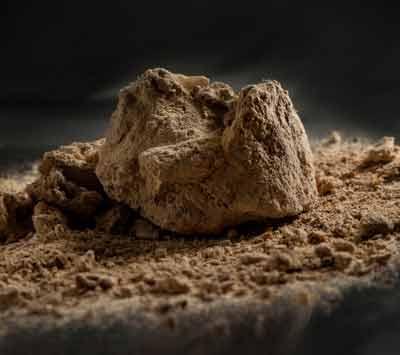Blake de Pastino
Source - http://westerndigs.org/ancient-feces-from-oregon-cave-arent-human-study-finds-adding-to-debate-on-first-americans/
New findings about some ancient feces are the latest rejoinder in a five-year-long debate over one of the most important — and controversial — recent archaeological finds in the U.S.
The debate centers around the discovery of dessicated feces, or coprolites, in a cave in south-Central Oregon, first reported by an international team of researchers in 2008.

Evidence suggests that the Paisley Caves, overlooking an ancient lakebed in south central Oregon, were inhabited by humans as far back as 14,000 years ago, but some experts question the accuracy of those oldest dates. (Photo by Kolby Schnelli)
Found in a network of rockshelters known as the Paisley Caves, under layers laced with animal bones and a few human artifacts, the coprolites were found to contain fragments of human DNA.
What’s more, they were radiocarbon-dated to about 14,300 years ago — more than 1,000 years earlier than the oldest known sets of human remains in North America, found in Montana and Santa Rosa Island in California.
The feces, originally analyzed by a team led by biologist Dr. M.T.P. Gilbert, recharged an ongoing debate about who the earliest Americans were and when, and by what means, humans first occupied the continent.
Now, reporting in the Journal of Archaeological Science, another team of researchers says that its analysis of the oldest coprolite from the cave suggests it’s from an herbivore, not a human.
“The specimen under study … was not excreted by a human,” said Ainara Sistiaga, an archaeologist and visiting researcher at the Massachusetts Institute of Technology, in an interview.
“Our results show a predominance of the product of … plant intake. This value is too high to represent a human origin.”
Sistiaga’s team used gas chromatography and mass spectrometry to scan the scat for types of sterols — fatty molecules found in both plants and animals.
When plants are digested, they produce byproducts called phytosterols. Animal tissues, meanwhile, contain cholesterol — which the human body also manufactures on its own — and it, in turn, is metabolized into a compound called coprostanol.
“Humans, because of their omnivorous diet and their high levels of cholesterol biosynthesis, will always have a predominance of coprostanol, the intestinal product of cholesterol,” Sistiaga said.
But while coprostanol usually makes up about 60% of the sterols in human droppings, she said, the study finds that nearly 70% of the sterols in the Paisley Cave feces are plant-based.
“Even in the case of a vegetarian diet — unusual in an Upper Paleolithic society — the cholesterol and coprostanol values are too small to derive from a human,” she said.
The new study is only the latest salvo launched in the long scientific exchange over the Paisley Cave coprolites, which Sistiaga’s team describes as “hotly debated.”
Soon after Gilbert’s team published its findings in 2008, a few other researchers began drawing different conclusions about the site.
For example, Dr. Paul Goldberg — who co-authored the new study with Sistiaga — questioned the lack of phosphates found in the feces that would indicate an omnivorous diet.
Others argued that the strata in the cave were not intact, and that the lack of diagnosable artifacts in the oldest layers made human presence there uncertain.
Still others questioned the DNA results. Of the 14 separate droppings, six were found by Gilbert’s team to contain fragments of human mitochondrial DNA — the small rings of DNA in our cells’ mitochondria, which is discrete from the genetic code found in our chromosomes. Some critics have charged that these fragments were the result of contamination, by the archaeologists themselves or other, more recent human inhabitants of the caves.

Additional human feces, reported in 2012, were dated to 13,200 years ago, suggesting the cave’s inhabitants were at least contemporaneous with the previously oldest known North Americans. (Photo by Cheng [Lily] Li/University of Copenhagen)
But in 2012, members of Gilbert’s team, this time led by University of Oregon archaeologist Dr. Dennis Jenkins, announced that further excavations had revealed projectile points among the cave’s lower layers. And they, along with animal bones and yet more human feces found around them, dated to 13,200 years ago.
This seemed to suggest that that people who used the Oregon caves were at least contemporaneous with the other earliest-known, directly-dated North Americans, the team said.
Jenkins’ team continues to stand by the 14,300-year-old date for the oldest coprolites from the cave. But Jenkins told Western Digs that they could not comment on the findings of Sistiaga’s team without more data.
“Until we have time to conduct our own research, we have little to offer concerning sterols at the Paisley Caves,” Jenkins said.
A. Sistiaga, F. Berna, R. Laursen, & P. Goldberg (2014). Steroidal biomarker analysis of a 14,000 years old putative human coprolite from Paisley Cave, Oregon Journal of Archaeological Science DOI: 10.1016/j.jas.2013.10.016
M. Thomas P. Gilbert, Dennis L. Jenkins, Anders Götherstrom, Nuria Naveran, Juan J. Sanchez, Michael Hofreiter, Philip Francis Thomsen, Jonas Binladen, Thomas F. G. Higham, Robert M. Yohe II, Robert Parr, Linda Scott Cummings, & Eske Willerslev (2008). DNA from Pre-Clovis Human Coprolites in Oregon, North America Science DOI:10.1126/science.1154116